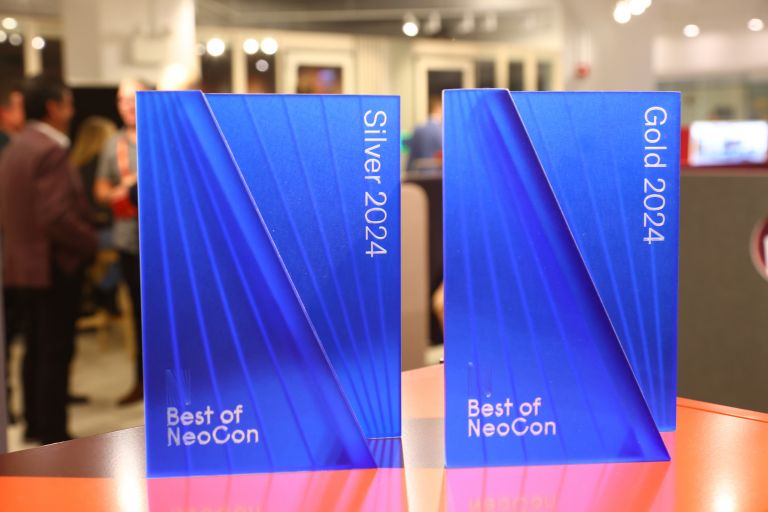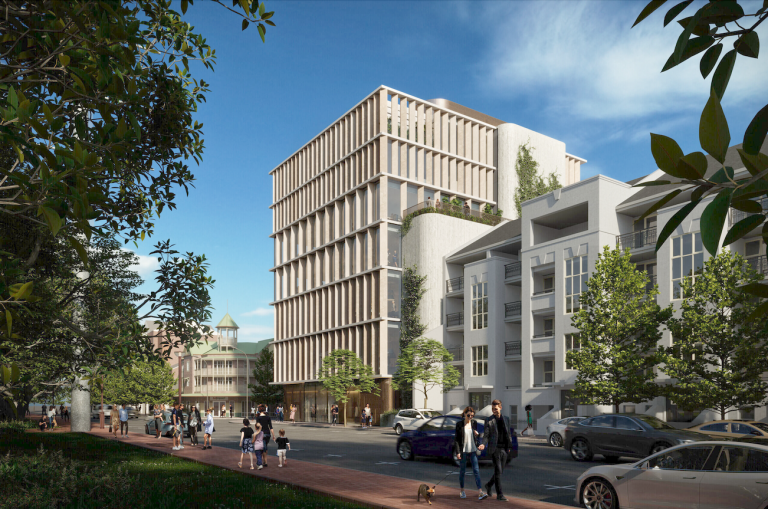EXTENDING THE PRODUCT LIFE CYCLE
There is a very clear case for companies to rethink the way they approach workplace change and reduce their carbon footprint.
Schiavello’s workplace asset renewal is an approach that goes beyond a solely commercial view and incorporates environmental and social considerations into the fit-out process. Central to this is a shift away from the traditional linear take-make-waste model.
Put simply, workplace asset renewal is about extending the useful life of the product, minimising waste, and maximising the value of the office fit-out.
Schiavello is uniquely positioned in this space, drawing on over 58 years of expertise in commercial furniture design and manufacturing to develop services that cover every stage of the furniture lifecycle. This workplace asset renewal program effectively formalises the work Schiavello has been doing with clients in this space for many years.
This year alone we have donated over a quarter of a million dollars of used furniture to support community outcomes, extending the product life whilst simultaneously minimising negative environmental impacts.
Working with one of Australia’s major banks to uplift over 7,000 lockers, Schiavello retrofitted each locker with smart locks. This project not only resulted in significant cost savings, but also diverted tonnes of material ending up in landfill by retaining existing joinery.
In Brisbane, we supported a client with the re-use of over 720 meters of workstations—enough to circle the Melbourne Cricket Ground one and a half times over.
Schiavello’s end-to-end approach means not just looking at what can be done with the asset near the end of its life, but instead considering asset renewal from the very conception of that product. This includes the way a product is designed, with malleability and longevity in mind, as well as the way it’s manufactured with the use of more sustainable materials and processes.
By integrating in-house technology solutions such as workplace and asset management software, Schiavello can ensure organisations are able to optimise their assets to get the best commercial outcomes, and the best outcomes for the environment.
This is done in partnership with Nura Space (Schiavello’s in-house technology business) and allows organisations to audit and track their individual workplace furniture items.
Unfortunately, when furniture ends up in landfill, so does its data. These asset management solutions, powered by Nura Space, allow organisations to collect detailed information to support strategic workplace decision making and ESG reporting.
Once that audit is complete and there is a clear picture of the state of each asset available, recommendations are then made around the feasibility of re-using or repurposing the asset, versus supplying new. Schiavello project manages every step, from dismantling and removing assets to re-using, repurposing and renewing where required, even facilitating donations if the products are no longer required.
The goal is to ultimately reduce the amount of commercial furniture waste going into landfill and create a lasting positive impact.
NEW LEGISLATION CHANGES
Thankfully, we are not alone in this quest. The growing shift towards sustainable practices across public and private sectors is encouraging. The Federal Government’s new Environmentally Sustainable Procurement Policy coming into effect on July 1, 2024 presents an excellent way to leverage Government’s purchasing power to support sustainability and circular outcomes, with the policy’s aim to reduce landfill waste, boost recycling and reduce emissions. By encouraging suppliers to offer environmentally sustainable options, we can all make a significant step towards a circular economy and driving Australia’s transition to net zero.
Mandatory Climate-Related Financial Disclosures are also set to come into effect. This represents the biggest shift in corporate reporting in a generation and is a reflection of the expectations investors, employees, regulators and the wider community have of businesses being clear about how they are managing risks and opportunities presented by climate change.
WHAT DOES IT MEAN FOR OUR CLIENTS?
With increasing societal and legislative pressure, now is the time for organisations to walk the talk on sustainability. One way organisations can do this is by creating workplaces that reflect their commitment to sustainable practices.
That could be investing in products that have environmental certifications or simply finding ways to work with what you already have. The most sustainable furniture is the one that you don’t throw away.
At Schiavello, we are supporting our partners in this space by developing products that are environmentally certified by independent, globally recognised bodies. Our leading products are either GECA, Declare or UL Greenguard certified and Schiavello works hard to ensure industry standards are not just met, but surpassed.
Schiavello’s new Workplace Asset Renewal program also helps to ensure that clients stay ahead of the curve and can meet their own sustainable procurement and reporting goals.
A HISTORY OF SUSTAINABILITY
Sustainability is one of Schiavello’s founding principles and remains at the core of everything we do. We were the first Australian company to adopt ISO 14001 Certification in 1997 and have been designing products with circularity in mind for decades.
With furniture designed with longevity, malleability and re-usability in mind, it’s these design principles which advocate for the extension of a product’s usable life, enabling its re-purposing and re-use.
By manufacturing furniture that lasts far beyond its warranty period, unnecessary production can be avoided and environmental impact minimised.
Our furniture is a Product of Australia, with materials sourced locally and products that are designed, manufactured, and assembled locally. As a result, Schiavello furniture fundamentally has less embodied carbon, avoiding excessive international transportation which is a significant contributor to greenhouse gas emissions.
WHAT’S NEXT?
Schiavello’s new Workplace Asset Renewal program advocates for a circular economy approach to commercial furniture. Asset re-use is prioritised wherever possible, with recycling (whilst it’s an important thing to do) as a last resort.
Re-using existing assets can reduce carbon emissions by up to 21 times when compared to recycling**, and it’s these adjustments that will see meaningful change driven.
Looking ahead, Schiavello is committed to achieving net zero emissions by 2038. We are focused on a more efficient use of materials, improving resource consumption efficiency, and analysing embodied carbon in their manufacturing processes.
Sustainability continues to be one of Schiavello’s guiding principles and we are committed to delivering sustainability outcomes in partnership with our clients. Together we can do our part for the protection of our environment and future generations.
If you would like to learn more about our new Workplace Asset Renewal program, please contact Marko Sanovic – [email protected].
* Source: Australian Government, ‘Designing out waste for commercial furniture and furnishings’
** Source: Green Standards ‘State of The Circular Workplace 2023’ report (pg.4)
Related content

Focus Quiet Rooms Win Gold at Best of NeoCon Awards






